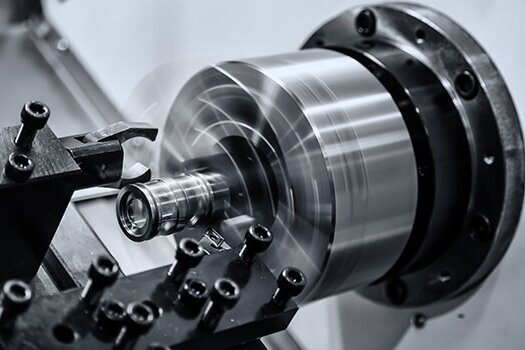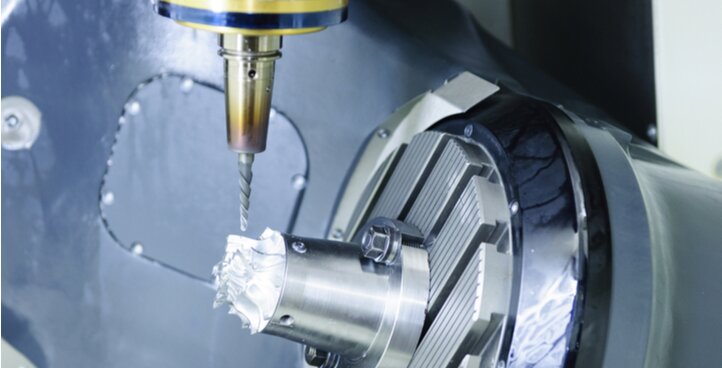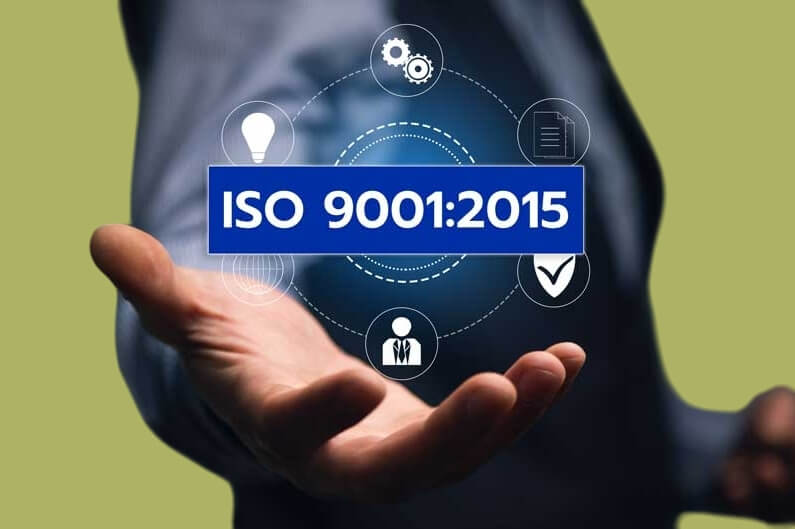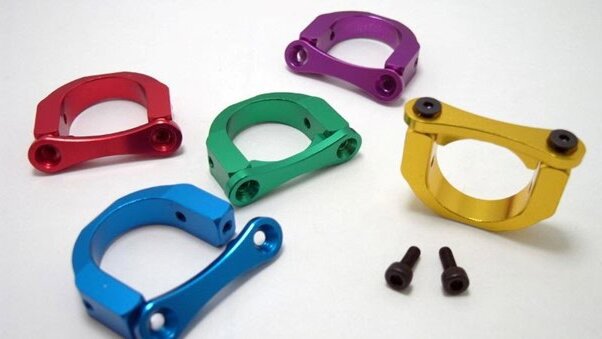We use various finishing techniques at Shengen in the fabrication process. The brushed metal is one of the most popular finishes. This technique enhances metal parts’ appearance and adds durability. This post will reveal my knowledge on the subject. Let me explain what a brushed metal finish is. I’ll also show you how it can benefit your next project.
Brushed metal finish involves polishing metal surfaces to achieve a unidirectional satin finish. This process creates a pattern of fine lines that run in a single direction, giving the metal a distinctive look and texture. The brushing technique increases corrosion resistance, minimizes light reflection, and improves the aesthetic appeal of metal parts.
Let’s continue to explore this finish and its technicalities. The brushed finish is not only about appearances; it has many practical advantages.
How to Create Brushed Metal Finish
Materials used in Brushed Metal Finishing
Metals suitable for brushing
Shengen works with many metals, including stainless steel, aluminum, and copper. Stainless steel, aluminum, and copper are the metals we work with. The properties of each metal are unique, but all can be enhanced with a brushed surface, improving both durability and appearance.
Tool and Equipment Required
Specific tools are required to achieve the perfect brushed finish. We use abrasive brushes, belts, and pads. The coarseness of these varies depending on the finish desired. You can brush with hand-held power tools, bench grinders, or other machines.
Brushing Technique
The Step-by-Step Procedure
- Inspection:Selecting the suitable abrasive depends on the metal type and desired finish.
- Set up the equipment:Mount the abrasive on the tool and ensure it is secure.
- Brushing:Metal is brushed uniformly in one direction with consistent pressure for a smooth finish.
- Inspection:After brushing, we check the metal for quality and uniformity.
Different Brushing Techniques
Brushing techniques are varied. Some projects may require a more acceptable finish using a high-grit abrasive, while others may need a coarser texture. The direction in which you brush also significantly impacts the final look.
Surface preparation for brushing
Cleaning and Preparing Metal Surfaces
It is essential to thoroughly clean the metal before brushing. Remove any dirt, oil, or oxidation to ensure a consistent and smooth finish. Use degreasers and cleaning agents specifically designed for metal.
Common mistakes to avoid
- A good cleaning job can result in a good finish.
- Uneven pressure can lead to an uneven brush pattern.
- The wrong abrasive: Choosing an abrasive that is too coarse or fine can dramatically alter the desired look.
Aesthetics and Functions
Brushed metal: A Visually Appealing Material
Compare Matte vs. Glossy Finishes
Our experience at Shengen has shown that the choice between matte and glossy finishes is often a matter of aesthetics and application. Glossy surfaces reflect light and give off a polished, shiny look. Brushed metal provides a more subdued matte finish. This elegant understatement is ideal for applications requiring a lower reflectivity surface. It offers a modern and sophisticated look.
Color and Texture
Brushed metal significantly alters the color and texture. The brushing can give the metal a more natural and warmer tone by softening the color. This also alters the texture, giving a different tactile experience to unbrushed metal surfaces. This adds a layer of complexity and depth to the material.
Functional Benefits
Durability and longevity
Shengen advocates brushed metal finishes because of their increased durability. The brushing process strengthens the surface, making it more resistant to wear. The product will last longer, essential for high-traffic or use areas.
Resistant to Corrosion and Scratches
The resistance of brushed metal to corrosion and scratches is a significant advantage. The texture of the surface hides minor scratches and scuffs that are more noticeable on glossy, polished surfaces. When used in conjunction with protective coatings, specific brushing techniques can also improve the metal’s resistance to rust. It is, therefore, an excellent choice for indoor and outdoor use, as it maintains its appearance and integrity over time.
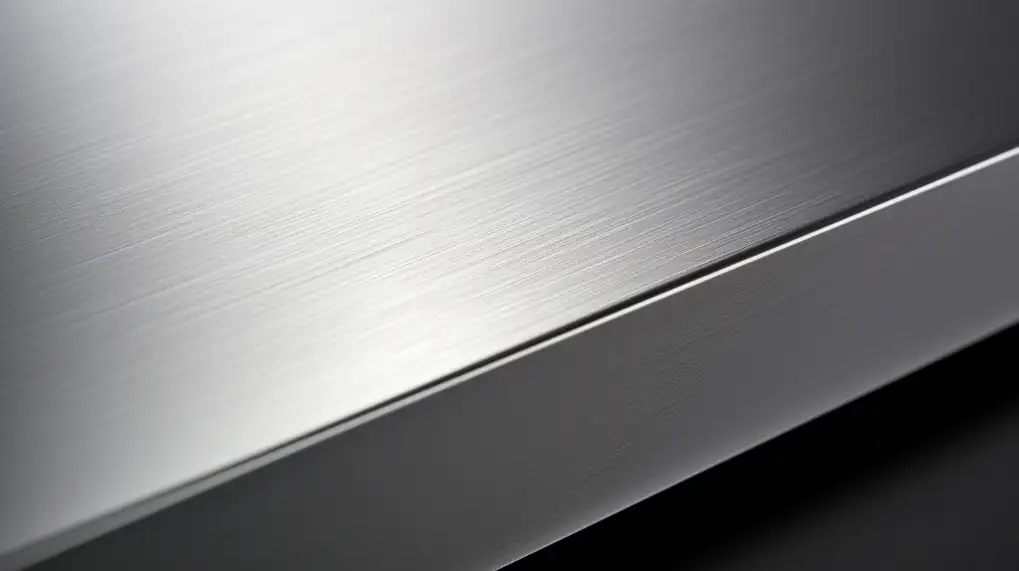
Applications and Examples
Architectural and Interior Design
The Iconic Structures and Buildings
We’ve seen the impact of brushed metal in Shengen on architecture and interior design. Iconic buildings often feature brushed metal on their exteriors and interiors. The ability of brushed metal to resist environmental factors and maintain an attractive appearance makes it a popular choice for decorative accents, claddings, and paneling. The brushed steel texture adds character and depth to buildings, allowing them to stand out among urban landscapes.
Home Decor and Furniture
It’s also used in furniture and home decor. The versatility and elegance of brushed metal translate well to items such as lamps, kitchen appliances, and even smaller decorative objects. Furniture designers use brushed steel to modernize cabinets, tables, and chairs. It is durable yet stylish and complements many interior themes.
Industrial and Automotive Uses
Machines and Equipment
In the industrial sector, brushed metal is highly valued for its durability and resistance to wear. In areas with frequent human contact, we often provide components with a brushed surface for machinery and equipment. This finish enhances the equipment’s aesthetics and makes it easier to maintain.
Automotive Design Elements
The automotive industry often uses brushed metal finish for interior and exterior design. The resistance of brushed metal to corrosion and scratches makes it perfect for dashboard components, exterior detailing, and trim. The brushed finish gives vehicles a sophisticated, sleek look while ensuring that the parts are durable and resistant to the elements.
Advanced Techniques and Innovations
Combining Brushed Finish Metal With Other Finishes
Combining brushed metal and other metal finishes can have a dramatic effect. We often layer brushed metal with polished or patterned finishes at Shengen. A piece could, for example, have a brushed metal finish as its main surface and high-gloss, polished edges. This combination creates a stunning contrast, highlighting the unique qualities of each finish. Integrating brushed metals with colored or textured finishes opens up various design options, offering clients looking for something truly unique.
Brushing Technology Innovations
Metal brushing technology constantly evolves to meet the demand for greater efficiency and improved results. Recent innovations include an automated brushing system that provides consistent pressure and direction to produce a uniform finish on large batches of metal components. Computer-controlled patterns are another exciting advancement, which allows for designs and textures previously impossible to achieve or were too expensive to do manually.
We expect to see a rise in eco-friendly brushing techniques focusing on reducing waste and using sustainable materials. AI and machine learning in brushing machines are also possible and could revolutionize how we create specific finishes and custom designs. These innovations will improve the quality and versatility of brushed metal finishes and align with Shengen’s commitment to sustainable and innovative manufacturing practices.
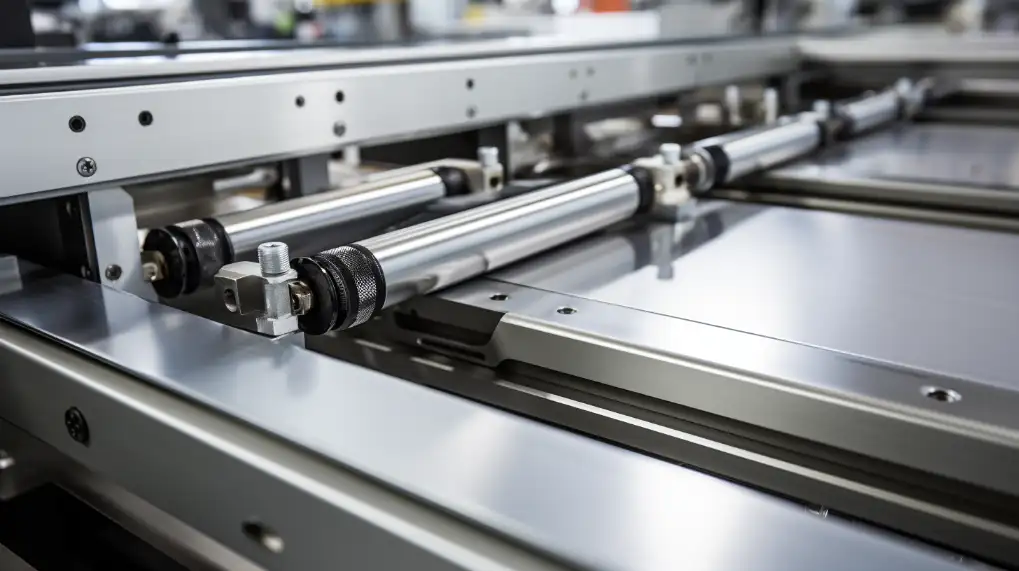
DIY Brushed Metal Finish
The Step-by-Step DIY Guide
A brushed metal finish can be an enjoyable project. Here is a guide for DIY lovers:
- Choose Your Metal: Select a metal that is suitable for brushing. Examples include stainless steel and aluminum.
- Clean Surface: Thoroughly wash the metal surface to remove dirt, grease, or rust. Wipe it with a clean, dry cloth after using a degreaser.
- Sanding the Surface:Start by using a coarser-grit sandpaper to remove imperfections. For a smoother surface, progress to finer grits up to 400 grit.
- Brushing Technique: Use a wirebrush or sandpaper. Brush in a single direction to achieve uniform lines. To achieve consistency, apply even, steady pressure.
- Final touches: Wipe the metal with a wet cloth to remove residue. You can add a metal sealant or clear coat to the metal for protection.
Common Challenges with Solutions
- Uneven Brushstrokes: To avoid this problem, brush always in the same direction. Tape can be used as a guide to ensure that your strokes are straight and consistent.
- Scratches too Deep: Start with a coarser grit when you see too deep scratches. Start with a fine grit and move to a coarser one if necessary.
- Uneven Finish: Maintain constant pressure while brushing. Avoid pressing too hard or brushing the same area repeatedly.
- Rusting or Corrosion: After brushing the metal, apply a protective coat to protect it, mainly if you use it outdoors or in humid environments.
Maintenance and Care of Brushed Finish Metal
Regular Maintenance Tips
We at Shengen understand the importance of maintaining the appearance and integrity of brushed metal finish. Here are some tips to help you maintain your brushed metal surfaces.
- Regular Cleaning: Use soft, dry cloths or dusters to remove dust and debris regularly from the surface. This will prevent the accumulation of particles which can scratch the metal with time.
- Gent Cleaning: Use a damp, soft cloth with warm water to clean more thoroughly. You can add a mild detergent to the water if necessary. To avoid scratches, gently wipe the surface.
- Rinse & Dry: After cleaning, rinse with clean water and remove any soap residue. Then, using a dry, clean cloth, wipe the surface in the same direction as the grain.
- Metal Polish: For an extra shine, apply a metal polish designed for brushed surfaces. Polish in the direction that the grain runs and then buff with a soft, clean cloth.
Avoid these products and methods.
- Abrasive Cleaning: Avoid using abrasive cleaning products or scrubbing pads, as they may scratch and damage your brushed finish.
- Harsh Chemicals: Avoid harsh chemicals such as bleach or chloride, which can cause corrosion and discoloration.
- Cleaning Against the Grain: Do not clean or polish the surface against the grain. This can cause unsightly scratches and ruin the uniform look of the brushed finish.
- Overpolishing: Excessive polishing will wear the finish down over time. It is best only to polish when needed.
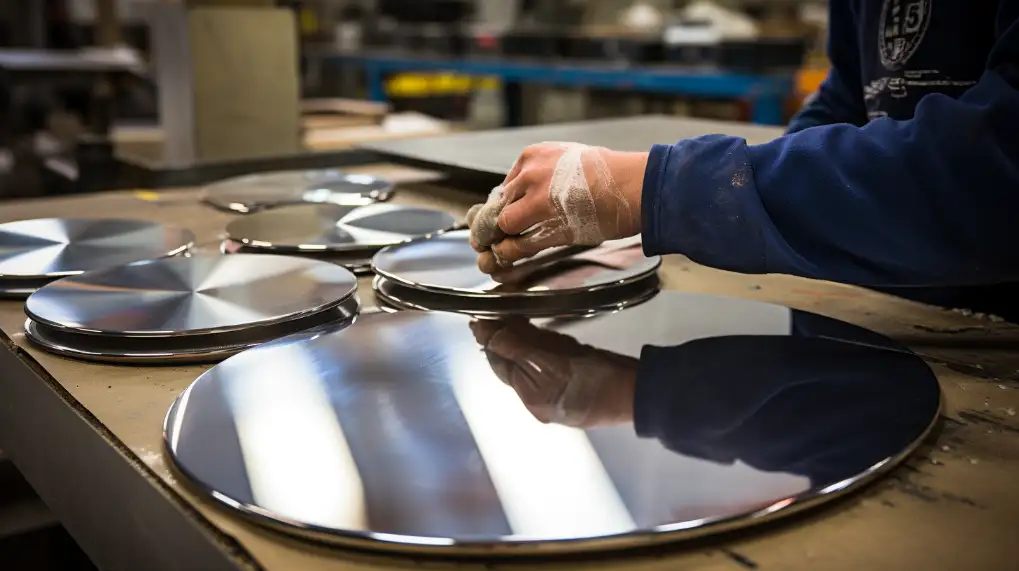
Environmental and Health Considerations
Materials and techniques that are sustainable
We are committed to using environmentally friendly practices for our brushed metal finishes. Our approach includes:
- Sustainable Materials: We prioritize materials that are recyclable and have less of an environmental impact. Using eco-friendly metal alloys and sourcing materials from sustainable mining suppliers are all part of this.
- Reducing waste: Our processes aim to minimize waste. Recycling metal scraps is one of the ways we reduce waste. We also use the closed-loop system for chemicals and solvents.
- Energy-Efficient Equipment: We invest in the latest energy-efficient equipment that reduces our carbon footprint.
- Non-Toxic Chemicals: We use fewer toxic chemicals in the brushing process to ensure our waste is not harmful to the ecosystem.
Protective equipment and best practices
Our workers’ health and safety is our top priority. We follow strict guidelines, including:
- Protective Equipment: Workers wear protective gear such as gloves, safety goggles, and masks to protect themselves from metal particles and chemical contamination.
- Ventilation System: Our facilities can safely extract any airborne particles or fumes from the brushing procedure.
- Training: We regularly conduct training sessions. These sessions inform our employees about the hazards of materials and equipment and teach them safe handling practices.
- Emergency Response Protocols: We have established clear emergency response protocols to deal with any accidents or incidents of exposure and ensure prompt and adequate medical care.
The Business of Brushed Metal Finish
Current Demand and Future Projection
Market trends in the world of brushed finishes are constantly changing. We’ve seen a constant demand for brushed steel in many sectors, including architecture, consumer electronics, and automotive. The sleek, modern look and durability of brushed steel attract more consumers. This trend will continue to grow, thanks to innovations in finishing technology and the increasing preference for materials that combine style with functionality.
We expect a rise in the demand for environmentally friendly and sustainable metal finishing methods. The shift in demand is due to the growing awareness of environmental issues among consumers and businesses. There is also a growing demand for custom finishes and unique products, opening up new markets and opportunities.
Start a Brushed Metal Finishing Business
There are several important factors to consider when starting a business that offers brushed metal finishes:
- Understand Market: Perform thorough market research to understand customer needs, current trends, and your competitors. This will allow you to tailor your marketing and service strategies.
- Investing in Quality Equipment: High-quality brushing gear is essential for superior finishes. Consider your initial investment as a long-term asset.
- Put a focus on sustainability: Integrate eco-friendly practices in your business model. It is not only good for the environment, but it can also be an attractive selling point to customers.
- Training and Expertise: Ensure you and your team have the required skills and knowledge. Staying abreast of the latest technological advances and undergoing continuous training is essential.
- Networking and Marketing: Create a marketing strategy that will help you reach your audience. Building a client base by networking with companies that use brushed metal finishes.
- Quality Management: Implement strict quality control measures. The finish quality can have a significant impact on your business’s reputation.
- Customer Support: Excellent customer service can help you stand out in a competitive market.
Conclusion
This comprehensive guide to brushed metal finishes covers a wide range of topics, from the materials and techniques used the benefits for aesthetics and functionality, and the applications across diverse industries. We have covered the importance and care of brushed metal finishes and the environmental and health considerations crucial to manufacturing.
Consider the benefits of a high-quality, durable brushed metal finish if you are in the metals industry. We are committed to providing top-notch sheet metal fabrication services that meet your needs. Contact us to learn more about our brushed-metal finishing services and how they can improve your product’s performance and quality.
FAQs:
Any metal can be given a brushed surface?
Stainless steel and aluminum are the most common metals for brushing. You can also buff copper, brass, and copper alloys. It depends on the properties of the metal and the desired aesthetic or functional outcome.
What is the difference between brushed and polished metal?
Brushed metal is often more durable than polished metal. The brushing can make the surface more durable and resistant to corrosion and scratches.
Can brushed metallic finishes be used outside?
The brushed metal finish is suitable for outdoor applications, particularly when combined with protective coatings that increase their resistance to corrosion and weather.
How do you maintain and clean brushed metallic surfaces?
The routine maintenance involves cleaning gently with a soft rag and mild detergent. Rinse and dry in the direction that the grain runs. Do not use harsh chemicals or abrasive cleaning products to avoid damaging the finish.
More Resources:
Metal Finishing – Source: Sharrettsplating
Projections on trends in the metal finishing industry – Source: Mordor Intelligence
Health and environmental impacts of metal finishing – Source: ILO Encyclopaedia
Hey, I'm Kevin Lee

For the past 10 years, I’ve been immersed in various forms of sheet metal fabrication, sharing cool insights here from my experiences across diverse workshops.
Get in touch

Kevin Lee
I have over ten years of professional experience in sheet metal fabrication, specializing in laser cutting, bending, welding, and surface treatment techniques. As the Technical Director at Shengen, I am committed to solving complex manufacturing challenges and driving innovation and quality in each project.

